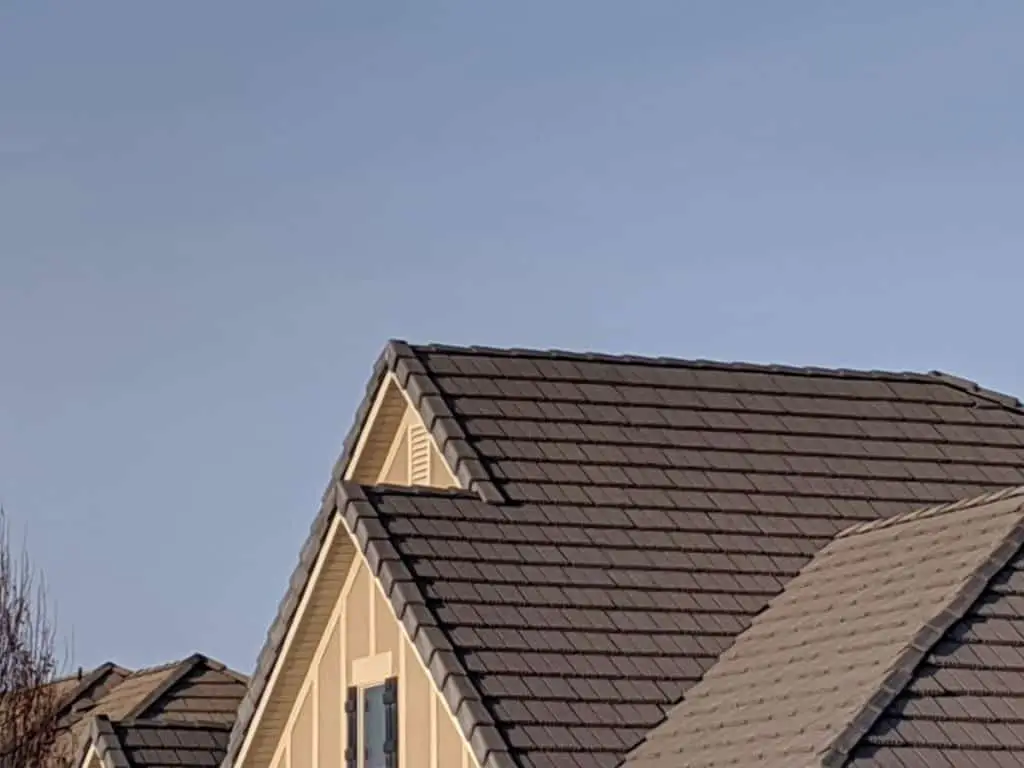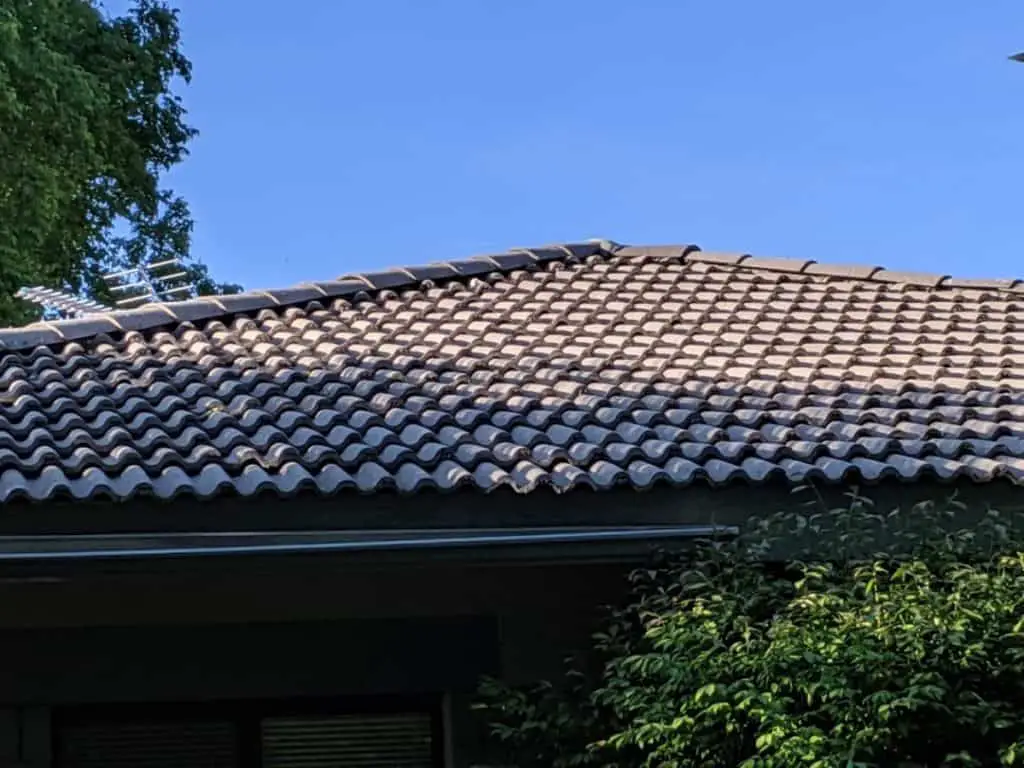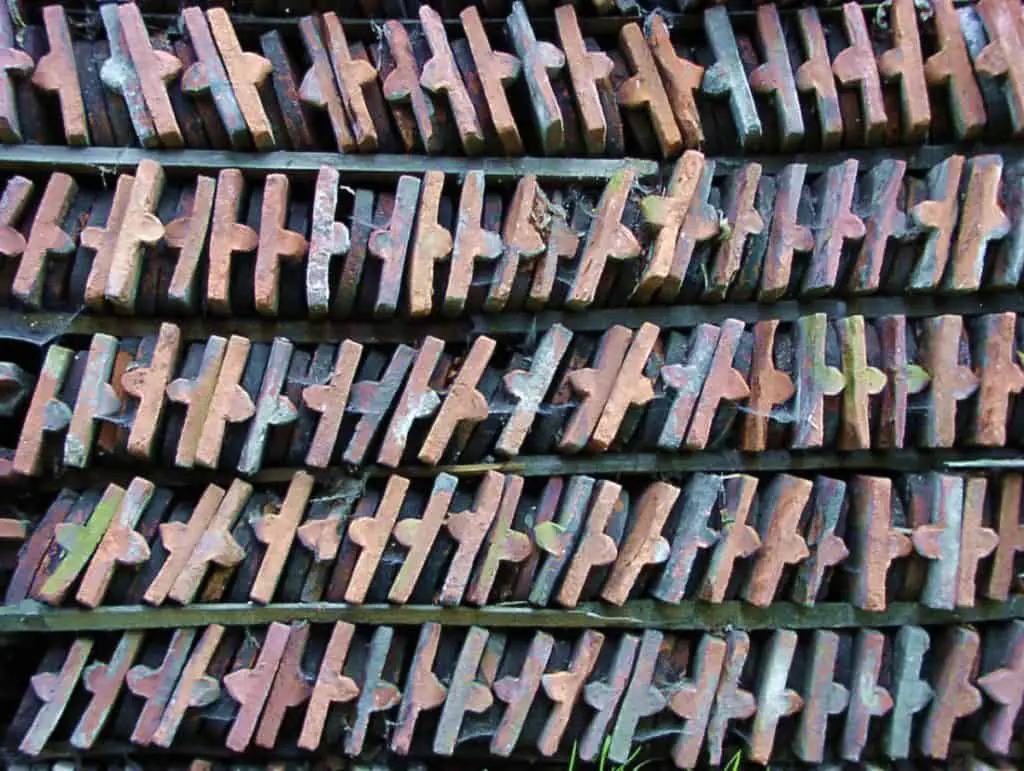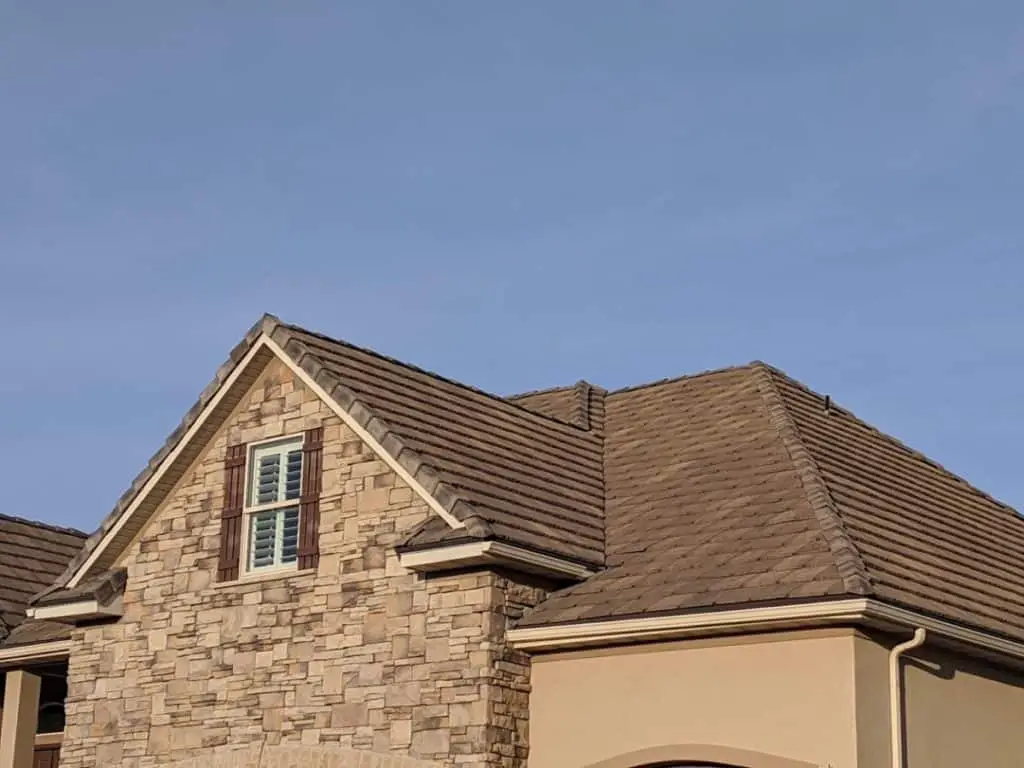
What are Concrete Roof Tiles?
Concrete Roof tiles are made out of a cement mixture that is formed under intense heat and pressure.
The tiles are colored by either adding color to the cement mixture before its molded or by covering the tile in a cement-based pigment.
The strength of the concrete and the great look of a tile roof at an affordable price are what make this roof system increasingly popular.
Concrete Roof tiles are similar to clay tiles but have some key differences. If you are thinking about Concrete roof tiles as your next roof you are going to want to consider all the advantages and disadvantages that come from this type of roof system.
Worried About Doing the Work Yourself?
I recommend finding a professional roofing contractor through our trusted partner Home Advisor because they allow you to get up to 4 quotes for free. This allows you to compare and choose the best roofing professional for your needs. Check them out by clicking this link.
Pros:

1.Price:
Concrete tiles are more affordable than clay tile roofs. The average cost for Clay tiles is about $40-$90 per square (100 square feet in 1 square). Which is a lot less expansive than other tile roof options. You can see a chart that I made by clicking this link which compares the prices and life expectancies of all 17 different types of roof materials of Concrete Roof tiles to Clay tiles and other roof systems.
2.Style:
Concrete tiles are great because they can be formed into any shape. They can mimic the textures of wood shake, clay, slate, and stone. They also come in a variety of profiles ranging from high to low.
3.Wind Resistance:
Concrete Tiles have a strong resistance against wind and heavy snow loads. They are rated for wind speeds up to 180 mph. This makes them great for places the experience high wind.
4.Impact Resistance:
Concrete tiles are rated up to a Class 4 impact rating. This means it was tested to withstand impacts from 2-inch sized hail.
5.Recyclable:
Concrete Tiles are eco-friend because they are made from recyclable materials.
6.Energy-Efficient:
The concrete used to make the tiles is a low heat transfer material. This means it helps to keep the roof warm in the winter and cool in the summer saving you money. It also provides good UV protection.
7.Life Expectancy:
Concrete Tiles are expected to last anywhere from 30 to 50 years which is not as long as some of the Clay tiles which can last up to 100 years but still longer than most roof systems.
8.Versatility:
Concrete Tiles are versatile meaning they can be used for both commercial and residential roof systems. However, there must be a minimum slope of 3:12 which means it rises 3-inches for every 12 inches. If you don’t know the slope of your roof you can click this article where I explain two different ways to find out the slope of your roof.
9.Fire Resistance:
Concrete Tiles naturally have a strong resistance to fire. They are rated as a Class A fire rating which is the highest fire rating possible. This roof system will help protect your home from falling ash or embers in the event of a nearby fire.
10.Low Maintenance:
Concrete tiles require little maintenance. However, they require a bit more maintenance than Clay tiles. Concrete tiles may need to be re-colored if efflorescence occurs or if the color fades (see the list of cons down below).
11.Repairs:
Concrete tiles are pretty easy to repair if they ever break. It simply involves pushing or lifting up the parent tiles and sliding in a new tile. However, I always recommend that you have a professional make any repairs needed especially if you aren’t a very “handy” person. You would not want to accidentally break more tiles as you are trying to repair the already broken ones.
Cons:

1.Weight:
Concrete tiles much like most other tile roofs are heavy. Standard Concrete tiles weigh anywhere from 900 lbs to 1200 lbs per square. However, manufacturers have developed a lighter weight option which weighs about 500 lbs to 720 lbs per square. That is still considerably heavy when compared to asphalt shingles which weight up to 350 lbs per square. This means that if you decide on Concrete tiles you will have to make sure the framing structure of the roof can support the additional weight. You may have to get it reinforced if you are switching from asphalt shingles to Concrete tiles.
2.Color Fade:
Another disadvantage of Concrete tiles is that as it ages the color pigmentation may fade. This only occurs when the color is added to the surface of the tiles using a concrete-based pigment. This does not typically happen when the pigment is added to the concrete tile before it is formed. This can be a problem when making repairs to the tiles because the replacement tiles may not match the rest of the roof.
3.Efflorescence:
Concrete roofs are more porous than clay so it absorbs more water than clay does. A natural consequence of this is when water mixes with carbon dioxide to combine with the lime in concrete to create a white chalky substance to appear on the surface of the concrete. This effect is called Efflorescence. This may make the concrete looked stained but can be cleaned off. It can also be sealed to help prevent moisture from being absorbed.
4.Brittle:
Concrete Tiles are durable and strong, but also brittle. They may break if walked on improperly. This is why it’s important to hire a professional if you ever need any work done on your concrete tile roof.
5.Technical Installation:
As with most other tile roof systems, Concrete tiles are technical to install. It requires roofers to cut the tiles to precise shapes to get them to fit exactly. It also involves layering the tiles in a specific pattern to ensure it will work properly and look good.
Are Concrete Roof Tiles right for you?

When deciding whether or not concrete tiles are right for you you must take into consideration all the advantages vs the disadvantages. What is great about concrete tiles is that they are more affordable than clay tiles, or slate. If you like the look of a tile roof but have a smaller budget then concrete tiles are definitely the way to go.
But if you don’t want to restructure your home for the additional weight of a tiled roof. There are many other options you can consider.
Alternative Options:
I spent several months researching and writing a 10,000+ word article that gives an overview of all the different types of roofing materials that are used today. If you want to explore what other options are available besides concrete tiles, then I recommend you take a look at that article: 17 Different Types of Roof Materials Used Today.
If you like the look of a tiled roof you can check out the other Pros & Cons lists for any of these other tiled roof systems:
Related Questions:
Is Concrete Tile Roof Good? Concrete Tile roofs are a good roof if you like the look of a tiled roof but do not want the price tag of a clay or slate roof. Concrete tile roofs are the more affordable option but come with their own unique disadvantages.
Which is better Clay or Concrete Tiles? Clay tiles look better and maintain their curb appeal throughout its life. While concrete tiles are more affordable and can fade in color. Both are fairly easy to repair but technical to install.
